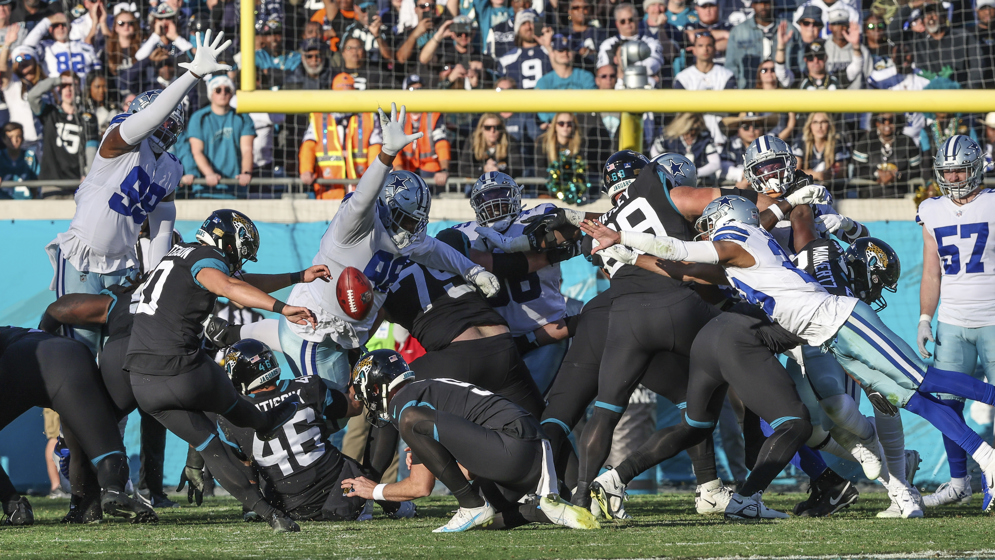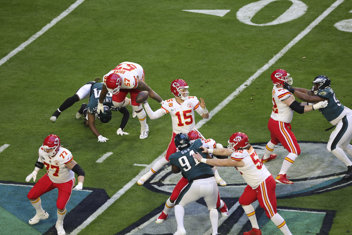NFL games are competitive and unpredictable. During the 2022 season, 25 games were decided by a game-winning score on the final play, including the Minnesota Vikings' Week 15 victory when they overcame a 33-point deficit, the largest comeback in NFL history. Inevitably, with so many games so close, some will end with a tie score at the end of regulation.
The 2022 season featured 20 games that required overtime, compared to 21 during the 2021 season. Since the NFL added an overtime period in 1974 to resolve regular season games that end regulation time with a tie score, 647 games (1974–2022) have been decided in overtime.
As with many NFL rules, the rules governing overtime have evolved over time.

(AP/Gary McCullough)
The league installed a modified sudden-death overtime system to help determine a winner in a tie game for the 2010 postseason. Two seasons later, the league expanded those rules to cover all NFL games.
The current rules give both teams the opportunity to possess the ball at least once in overtime. Although, during the regular season, if the team that gets the ball first scores a touchdown on the opening possession, they win.
In 2017, NFL clubs approved shortening overtime in the regular season to 10 minutes from 15. The rule change was aimed at improving player safety.
In 2022, NFL clubs approved a rule that allows both teams to possess the ball in overtime in the postseason.
OVERTIME RULES FOR NFL REGULAR SEASON
- At the end of regulation, the referee will toss a coin to determine which team will possess the ball first in overtime. The visiting team captain will call the toss.
- No more than one 10-minute period will follow a three-minute intermission. Each team must possess, or have the opportunity to possess, the ball. The exception: if the team that gets the ball first scores a touchdown on the opening possession.
- Sudden death play — where the game ends on any score (safety, field goal or touchdown) — continues until a winner is determined.
- Each team gets two timeouts.
- The point after try is not attempted if the game ends on a touchdown.
- If the score is still tied at the end of the overtime period, the result of the game will be recorded as a tie.
- There are no instant replay coach’s challenges; all reviews will be initiated by the replay official.
OVERTIME RULES FOR NFL POSTSEASON GAMES
Unlike regular season games, postseason games cannot end in a tie, so the overtime rules change slightly for the playoffs.
- If the score is still tied at the end of an overtime period — or if the second team’s initial possession has not ended — the teams will play another overtime period. Play will continue regardless of how many overtime periods are needed for a winner to be determined.
- There will be a two-minute intermission between each overtime period. There will not be a halftime intermission after the second period.
- The captain who lost the first overtime coin toss will either choose to possess the ball or select which goal his team will defend, unless the team that won the coin toss deferred that choice.
- Each team will have an opportunity to possess the ball in overtime.
- Each team gets three timeouts during a half.
- The same timing rules that apply at the end of the second and fourth regulation periods also apply at the end of a second or fourth overtime period.
- If there is still no winner at the end of a fourth overtime period, there will be another coin toss, and play will continue until a winner is declared.



